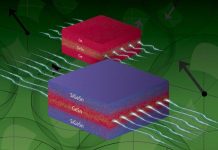
From smartphones and laptops to electric cars, lithium-ion batteries power much of modern life.
Yet they still come with frustrating limits—slow charging times, limited lifespans, and gradual loss of performance.
Scientists at MIT have now developed a new theoretical framework that could help solve these problems by shedding light on one of the battery’s most fundamental processes.
Their findings, published in Science, could guide the design of faster-charging and more durable batteries for everything from consumer electronics to clean energy storage.
At the core of every lithium-ion battery is a process known as intercalation.
During discharge, lithium ions dissolved in the battery’s electrolyte move into a solid electrode, slipping into spaces within the electrode’s structure.
When the battery is recharged, those ions exit the electrode and return to the electrolyte.
This cycle repeats thousands of times over a battery’s life, and the rate at which it occurs determines how much power the battery can deliver and how quickly it can be charged.
Until now, scientists lacked a clear understanding of what controlled the speed of this process.
For decades, the prevailing assumption was that lithium intercalation was limited by how quickly ions could diffuse into the electrode, described by a nearly century-old equation known as the Butler-Volmer model.
But experiments often produced wildly inconsistent results. Different labs, testing the same materials, sometimes reported reaction rates that differed by factors as large as a billion.
To tackle this mystery, MIT researchers led by Professors Martin Bazant and Yang Shao-Horn developed a new way to measure intercalation rates.
Their method involved applying rapid, repeated bursts of voltage to electrodes and recording how the materials responded.
The team tested more than 50 combinations of electrodes and electrolytes, including common battery materials such as lithium nickel manganese cobalt oxide, widely used in electric vehicles, and lithium cobalt oxide, found in most portable electronics.
What they discovered was striking: the measured intercalation rates were much slower than previous reports suggested and did not match predictions from the Butler-Volmer model. This finding prompted the team to develop an alternative explanation.
Their new theory proposes that lithium intercalation is controlled by a process called coupled ion-electron transfer (CIET).
In this mechanism, a lithium ion cannot enter the electrode on its own—it must be accompanied by the transfer of an electron from the electrolyte to the electrode at the exact same time.
Rather than being separate steps, the two processes occur together, lowering the energy barrier that makes the reaction possible.
“The key step is not just lithium insertion, as one might assume, but electron transfer to reduce the material that hosts the lithium,” Bazant explains. “Lithium intercalation happens alongside electron transfer, and they facilitate each other.”
This framework provided a way to make accurate predictions about reaction rates that matched the experimental data, something the older model could not do.
The team also showed that changing the chemical composition of the electrolyte—such as swapping in different negatively charged ions (anions)—could make it easier for the lithium-and-electron pair to enter the electrode, further boosting reaction speed.
According to Shao-Horn, this ability to “tune” reaction rates by adjusting the electrolyte opens up huge opportunities for improving battery design. Her lab is already using automated systems to create and test thousands of different electrolytes, feeding the results into machine-learning models that can predict which combinations will perform best.
The implications are far-reaching. Faster intercalation rates could translate into batteries that charge in minutes instead of hours.
Better control of the reaction could reduce side effects such as unwanted chemical reactions that degrade the battery over time. And a deeper theoretical understanding allows scientists to move beyond trial-and-error approaches, designing materials and systems based on clear principles.
“If you want to improve batteries rationally, rather than by guesswork, you need a framework to identify the most important parameters,” Bazant says. “That’s what this work is trying to provide.”
The research may not deliver instant solutions, but it lays crucial groundwork for the next generation of lithium-ion batteries—and possibly for entirely new kinds of energy storage.
By simplifying one of the battery’s most complex reactions into a clear model, MIT scientists have taken a major step toward a future where charging is faster, devices last longer, and clean energy becomes even more practical.
Source: MIT.



